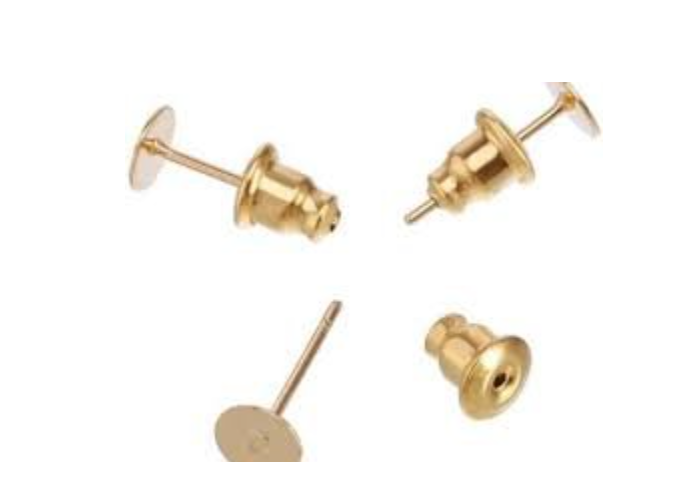Unlocking the Past: How to Date Earrings by Their Fastenings
Unlocking The Past: How To Date Earrings By Their Fastenings
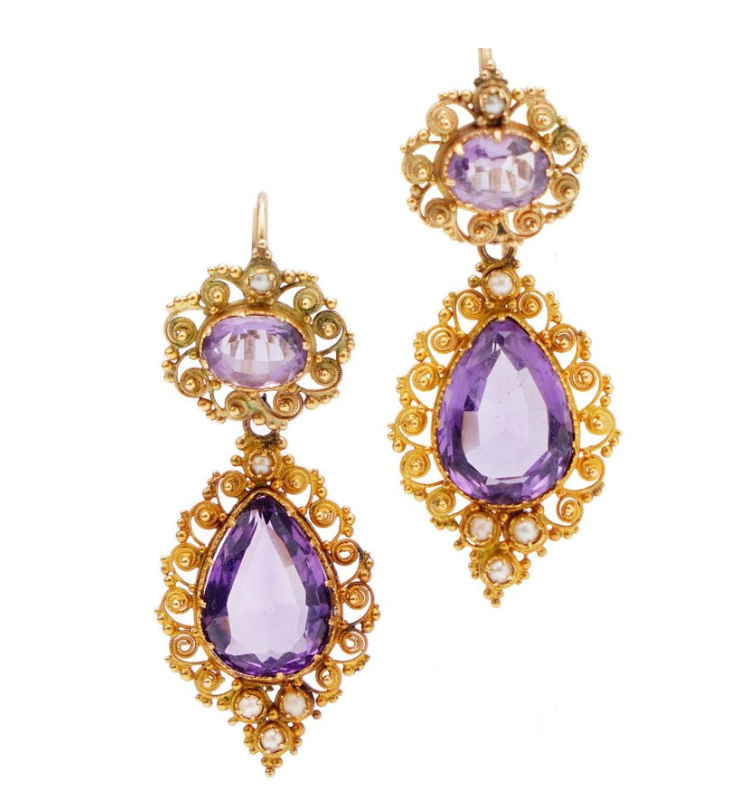
Image Courtesy of Mozeris Fine Antiques
Earrings represent one of the oldest and most enduring forms of personal adornment, with styles evolving dramatically over centuries. For collectors and enthusiasts, understanding how to date earrings by their fastenings provides invaluable insights into their age, authenticity, and historical context. This comprehensive guide explores the various types of earring fastenings, their historical development, and how they can help determine the age of your vintage pieces.
The evolution of earring fastenings reflects not only technological advances but also changing fashion preferences, safety concerns, and manufacturing capabilities. From the simple hooks of ancient civilizations to the sophisticated mechanisms of modern jewelry, each fastening type tells a story of its era.
Hook Earrings
Hook earrings represent the earliest and most enduring form of earring fastening, dating back thousands of years. These simple yet effective mechanisms consist of a curved wire that passes through the ear piercing and hooks behind the earlobe to secure the earring.
In antique jewelry, hook fastenings are particularly common in Georgian (1714-1837) and early Victorian (1837-1860) pieces. The hooks from these periods are typically handmade, showing slight irregularities and tool marks that distinguish them from modern machine-made versions.
Key Identification Features:
- Handmade hooks show slight irregularities and file marks
- Georgian hooks often have a more pronounced curve
- Victorian hooks may feature decorative elements or be integrated into the design
- Modern hooks are typically machine-made with uniform curves
Need Help Dating Your Hook Earrings?
Our experts can authenticate and date your antique earrings with precision.
Get Free EvaluationHinged Back Earrings
Hinged back earrings, also known as "kidney wire" or "continental" backs, became popular during the 19th century. These fastenings feature a hinged mechanism that allows the back portion to open and close, providing a more secure fit than simple hooks.
This style was particularly favored during the Victorian era for heavier earrings, as the hinged mechanism distributed weight more evenly and provided better security. The quality of the hinge mechanism often indicates the overall quality and age of the piece.
Dating Characteristics:
- Early 1800s versions have crude, handmade hinges
- Mid-Victorian pieces show improved manufacturing techniques
- Edwardian examples often feature delicate, precise mechanisms
- Post-1920s versions become less common as other fastenings gained popularity
Screw-Back Earrings
Screw-back earrings emerged in the 1890s as a solution for non-pierced ears, becoming extremely popular through the first half of the 20th century. These fastenings use a threaded post that screws into a backing, allowing adjustment for comfort and security.
The popularity of screw-backs coincided with changing social attitudes toward ear piercing. During the early 1900s, pierced ears were sometimes considered inappropriate for "proper" ladies, making screw-backs the preferred choice for fashionable women.
Period Indicators:
- 1890s-1910s: Heavy, substantial mechanisms with coarse threads
- 1920s-1930s: Refined designs with finer threading
- 1940s-1950s: Lightweight versions, often with comfort pads
- Post-1960s: Largely replaced by clip-ons and pierced ear styles
Expert Tip
Screw-back earrings from the Art Deco period (1920s-1930s) often feature geometric designs and are highly sought after by collectors. The quality of the threading mechanism can help determine both age and value.
Clip-On Earrings
Clip-on earrings revolutionized jewelry wearing when they were introduced in the 1930s. Using spring-loaded mechanisms, they provided a more comfortable alternative to screw-backs while maintaining security for non-pierced ears.
The 1940s and 1950s marked the golden age of clip-on earrings, with designers creating increasingly sophisticated and comfortable mechanisms. The quality and style of the clip mechanism can provide valuable dating information.
Evolution Timeline:
- 1930s: Early clips with simple spring mechanisms
- 1940s: Improved comfort with padded clips
- 1950s: Peak popularity with various clip styles
- 1960s onward: Continued use alongside pierced ear revival
Discover Vintage Clip-On Earrings
Browse our curated collection of authentic vintage clip-on earrings.
View CollectionFrench Wire Earrings
French wire earrings, also called "fish hook" earrings, feature a curved wire that passes through the ear piercing with no additional backing. This elegant, minimalist design has remained popular for over two centuries.
The simplicity of French wires makes them challenging to date precisely, but subtle differences in wire gauge, curve shape, and finishing techniques can provide clues about their age and origin.
Dating Clues:
- 19th century: Heavier gauge wire, handmade irregularities
- Early 20th century: More uniform manufacturing
- Modern: Consistent gauge, machine-perfect curves
- Contemporary: Often includes safety features or decorative elements
Lever-Back Earrings
Lever-back earrings feature a hinged lever mechanism that snaps closed to secure the earring. This design provides excellent security while maintaining ease of use, making it popular for valuable or heavy earrings.
The sophistication of lever-back mechanisms improved significantly over time, with early versions being quite crude compared to modern precision-engineered examples.
Period Characteristics:
- 1850s-1880s: Simple, often crude lever mechanisms
- 1890s-1920s: Improved engineering and smoother operation
- 1930s onward: Refined mechanisms with precise tolerances
- Modern: Often includes additional safety features
Push-Back Earrings
Push-back earrings, featuring a post that pushes through the ear with a removable backing, became popular in the 1920s. This design offered convenience and security for pierced ears, contributing to the revival of ear piercing.
The style and material of push-back mechanisms evolved significantly, with early versions being quite different from modern examples in both construction and materials.
Evolution Markers:
- 1920s-1930s: Heavy, substantial backings
- 1940s-1950s: Lighter materials, improved comfort
- 1960s onward: Mass production, standardized sizes
- Modern: Various safety and comfort improvements
Butterfly Back Earrings
Butterfly backs, also known as "friction backs," use a split backing that grips the earring post through friction. This design became increasingly popular throughout the 20th century due to its simplicity and effectiveness.
The material and construction quality of butterfly backs can help date earrings, with earlier examples often being more substantial than modern mass-produced versions.
Dating Indicators:
- Early 1900s: Heavy, well-made backings
- Mid-century: Standardization of sizes and materials
- 1970s onward: Lightweight, mass-produced versions
- Contemporary: Various materials including plastic and titanium
Professional Authentication Services
Uncertain about your earrings' age or authenticity? Our experts can help.
Contact ExpertLa Pousette Back Earrings
La Pousette backs, a French innovation, feature a sliding mechanism that locks the earring in place. This sophisticated system was popular in high-end jewelry during the early to mid-20th century.
The presence of La Pousette backs often indicates quality jewelry from established makers, as the mechanism required precision manufacturing and was typically used on valuable pieces.
Identification Features:
- Sliding lock mechanism with spring action
- Often marked with maker's stamps
- Typically found on high-quality pieces
- More common in European jewelry
Safety Back Earrings
Safety backs incorporate additional security features to prevent earring loss. These mechanisms became popular for valuable earrings and have evolved to include various locking and safety features.
The complexity and type of safety mechanism can provide clues about the earring's age, value, and intended use, with more sophisticated systems typically indicating higher-quality pieces.
Safety Features by Era:
- 1920s-1940s: Simple additional clasps or chains
- 1950s-1970s: Improved locking mechanisms
- 1980s onward: Sophisticated multi-stage safety systems
- Modern: Electronic or magnetic safety features
Expert Tips for Dating Earrings
Successfully dating earrings by their fastenings requires careful observation and knowledge of historical context. Here are professional tips to improve your accuracy:
Professional Dating Techniques:
- Examine Manufacturing Quality: Handmade vs. machine-made characteristics
- Check Materials: Metal types and alloys used in different periods
- Look for Maker's Marks: Stamps, signatures, or quality marks
- Consider Design Context: How the fastening relates to the overall design
- Assess Wear Patterns: Age-appropriate wear and patina
- Research Historical Context: Fashion trends and social factors
Remember
While fastening types provide valuable dating clues, they should be considered alongside other factors including design style, materials, construction techniques, and provenance for accurate authentication.
Expert Earring Authentication & Valuation
Whether you're building a collection, inherited vintage pieces, or considering a purchase, our specialists provide comprehensive authentication and dating services for antique and vintage earrings.
Trusted by collectors worldwide • Established 2015 • London & Essex
Hook Earrings
Hook earrings represent one of the most enduring designs in antique earrings, with roots tracing back to ancient civilizations. These elegant pieces feature a simple yet effective mechanism: a curved wire that passes through the earlobe and suspends decorative elements below. Particularly prevalent in Victorian jewellery, hook earrings often showcased the period's most sophisticated craftsmanship.
The versatility of hook earrings has ensured their continued popularity through various eras, from Georgian to vintage periods. Their enduring appeal peaked again during the 1960s and 1970s, when statement pieces featuring substantial drops and elaborate designs became fashionable.
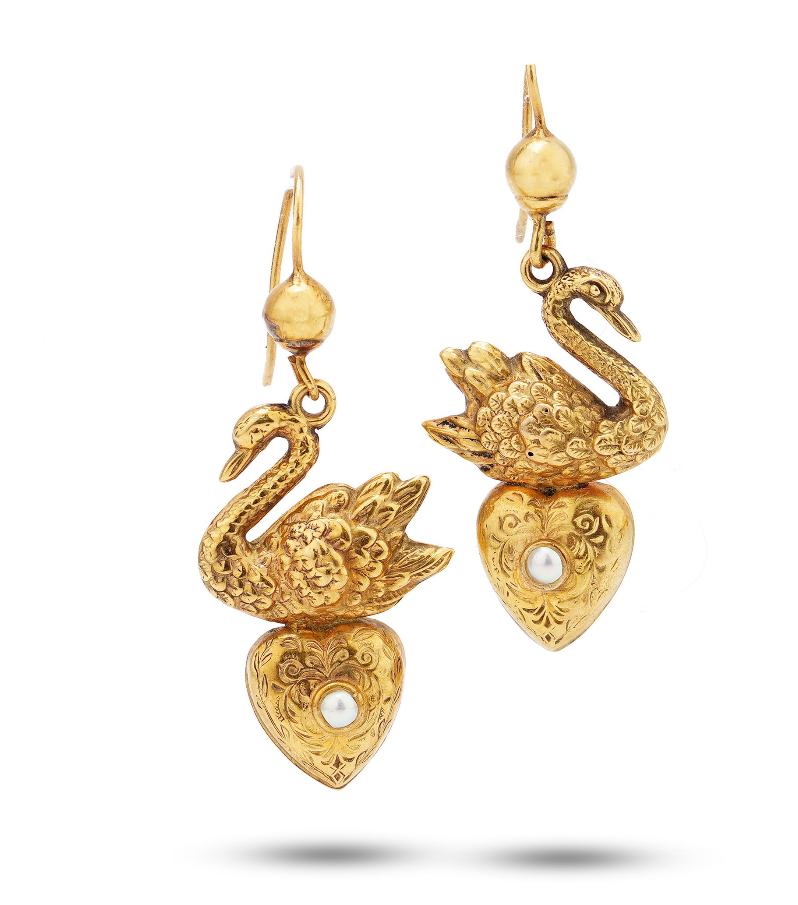
Hinged Back Earrings
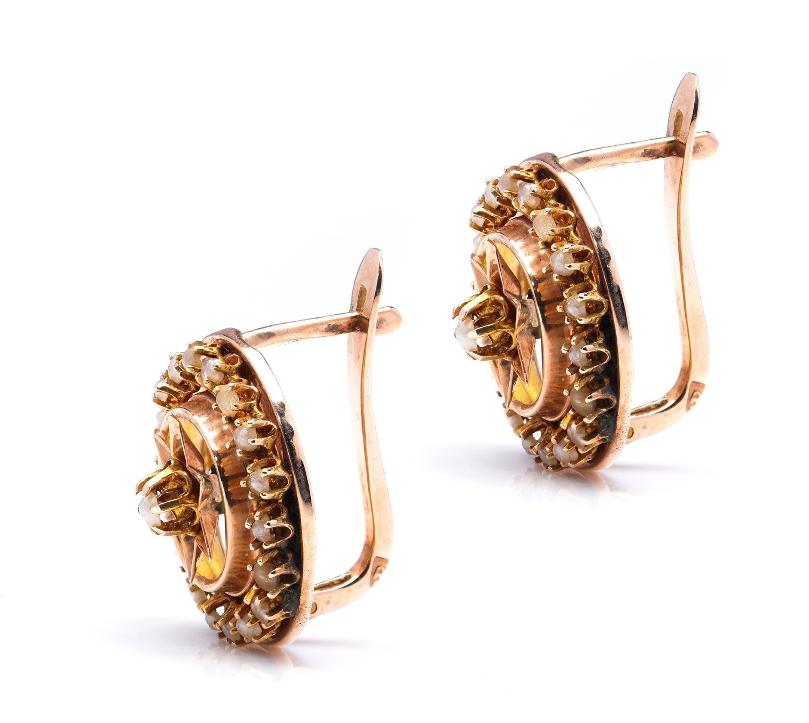
Developed in the late 1800s, hinged back earrings marked a significant advancement in jewelry design, offering enhanced security over traditional hook fastenings. These sophisticated mechanisms, featuring a hinged back piece and threaded post, became particularly prominent in Art Deco jewellery of the 1920s and 1930s.
The precision engineering of hinged backs made them ideal for securing precious stones and elaborate designs, especially in designer jewellery pieces. Their popularity during the Art Deco period is evidenced by the geometric patterns and diamond-set examples that survive today.
Screw-Back Earrings
Screw-back earrings emerged in the early twentieth century, gaining significant popularity during the glamorous era of the 1940s and 1950s. This innovative fastening mechanism provided unprecedented security for precious antique earrings, making them particularly suitable for valuable gemstone pieces.
The meticulous engineering of screw-back mechanisms reflects the sophisticated craftsmanship of the vintage era. These fastenings were especially popular in high-end pieces from the mid-twentieth century, often featured in important designer jewellery collections.
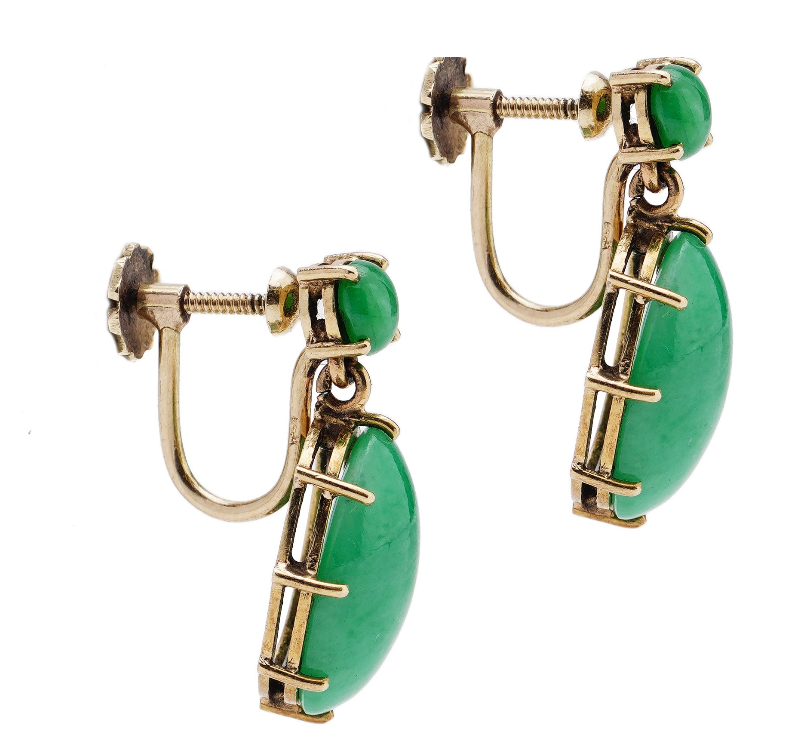
Clip-On Earrings
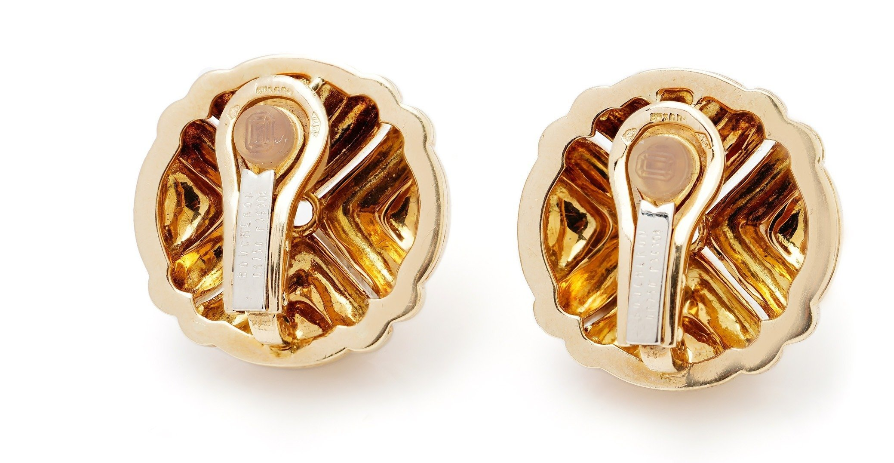
Clip-on earrings revolutionized jewelry accessibility when they emerged in the 1920s. Their popularity soared during World War II, as women entering the workforce sought practical yet elegant adornments. These versatile pieces became a cornerstone of vintage jewellery design.
The innovation of clip-on mechanisms allowed for larger, more dramatic designs, particularly evident in Art Deco and mid-century pieces. Today, they remain sought-after for their comfort and adaptability, found in everything from simple studs to elaborate statement pieces.
French Wire Earrings
French wire earrings, also known as shepherd's hooks, represent one of the most elegant solutions in antique earrings. While their origins trace back to ancient times, the refined version we know today emerged during the Georgian era of the 1800s.
These sophisticated findings feature a delicate curved wire that creates a seamless connection between the ear and the decorative elements. Particularly popular in Victorian and Edwardian jewellery, French wires continue to be prized for their elegant simplicity and secure wear.
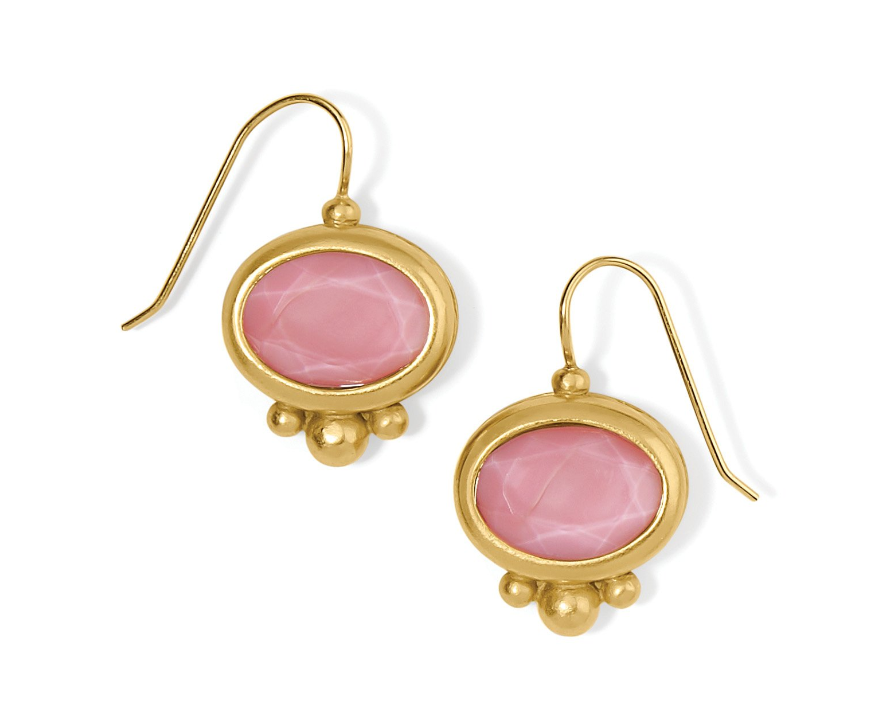
Lever-Back Earrings
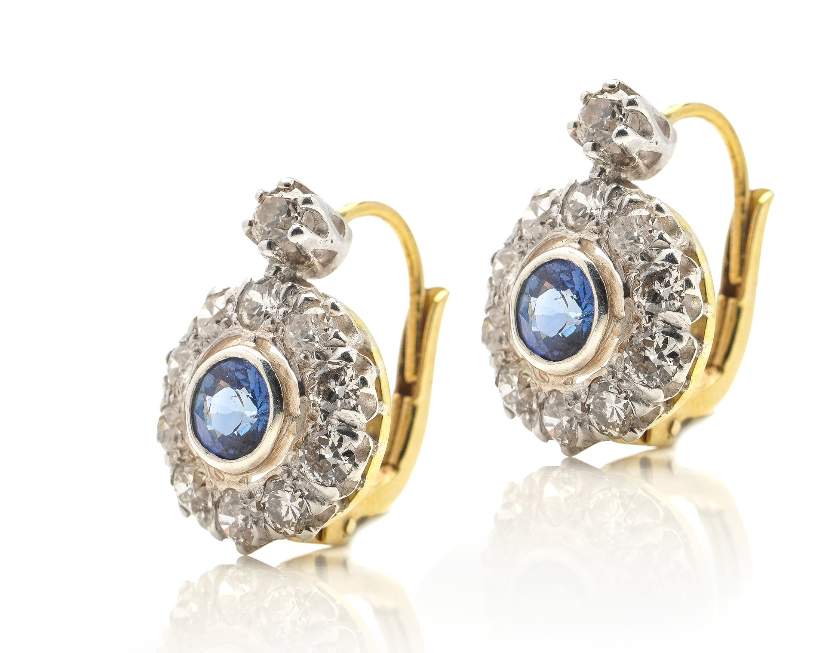
Lever-back earrings represent a significant evolution in antique earring design, offering enhanced security through an ingenious hinged mechanism. This sophisticated fastening system, featuring a curved lever that securely clicks into place, became particularly popular in fine Victorian jewellery.
The mechanism's reliability made it especially suitable for precious designer pieces, particularly those featuring significant gemstones or elaborate designs. This style continues to be favored in high-end jewelry, combining security with elegant aesthetics.
Push-Back Earrings
Push-back earrings, also known as friction backs, emerged in the early twentieth century as an elegant solution for securing fine earrings. This innovative design gained prominence during the Art Deco period, offering a perfect balance of security and ease of use.
The mechanism's simplicity and effectiveness made it particularly popular for vintage and designer pieces, where it continues to be widely used today. Its versatility allows for both delicate studs and more substantial drop designs.

Butterfly Back Earrings
Butterfly back earrings, introduced in the early 1900s, revolutionized earring design with their distinctive wing-shaped clutch mechanism. This innovative fastening system gained particular prominence in the 1950s, coinciding with the rise of vintage jewellery.
The design's practicality and secure fit made it especially popular for designer pieces, particularly stud earrings. The butterfly back's enduring appeal lies in its combination of security and comfort, making it a preferred choice for both everyday wear and special occasions.
La Pousette Back Earrings

La Pousette backs emerged in the mid-twentieth century as an innovative solution to secure valuable earrings. This sophisticated mechanism, featuring a hinged lever that locks firmly in place, became particularly popular in fine vintage jewellery of the 1950s and 1960s.
The design's exceptional security made it a preferred choice for designer pieces, especially those featuring precious stones or elaborate constructions. While less common today, La Pousette backs remain highly sought after by collectors for their superior engineering and historical significance.
Safety Back Earrings
Safety back earrings represent the pinnacle of secure earring design, featuring an innovative locking mechanism that provides exceptional protection for valuable pieces. This modern innovation has become particularly important for securing precious designer jewellery.
The sophisticated engineering of safety backs makes them ideal for substantial pieces and important vintage jewels. Their development reflects the ongoing evolution of jewelry fastening systems, combining security with ease of use.
